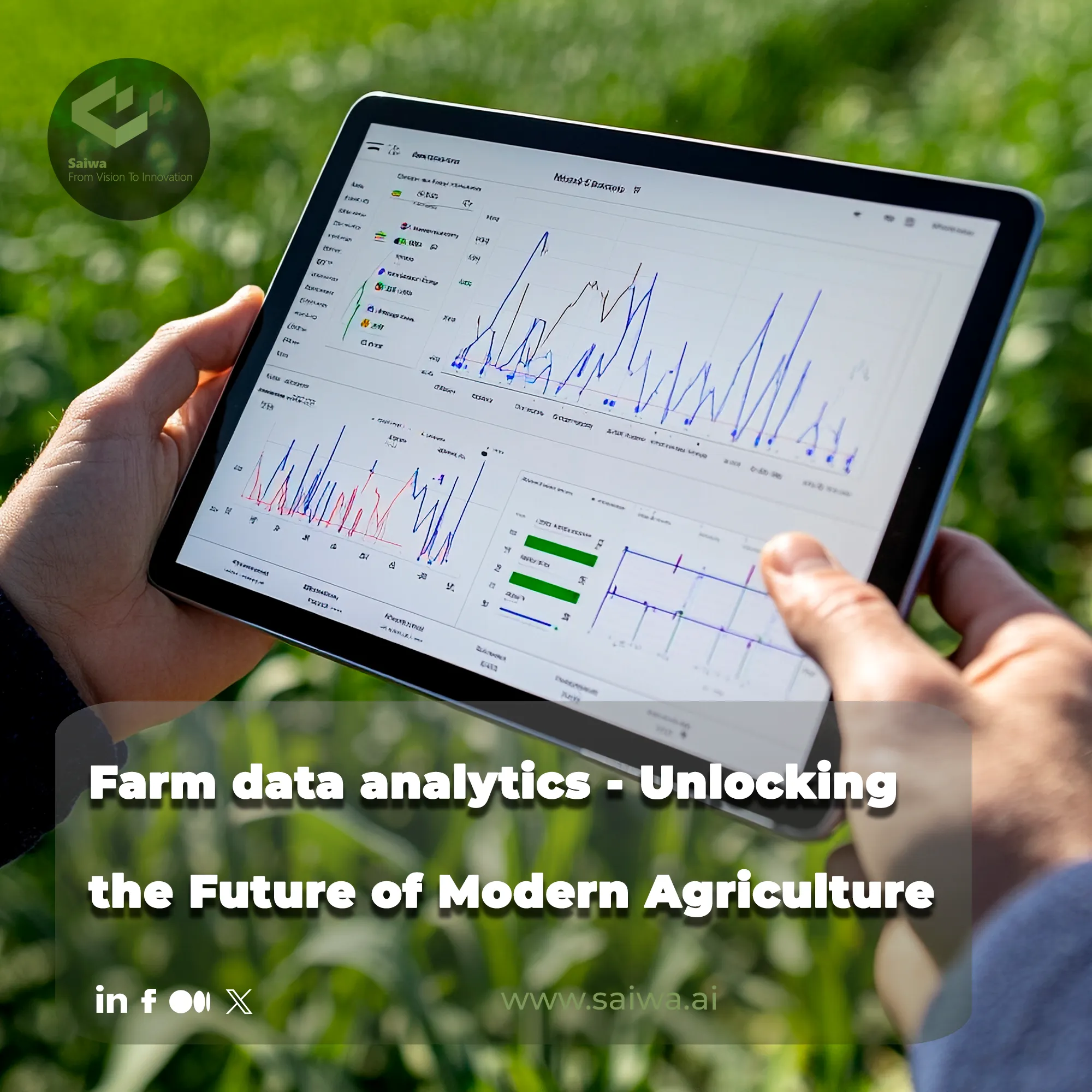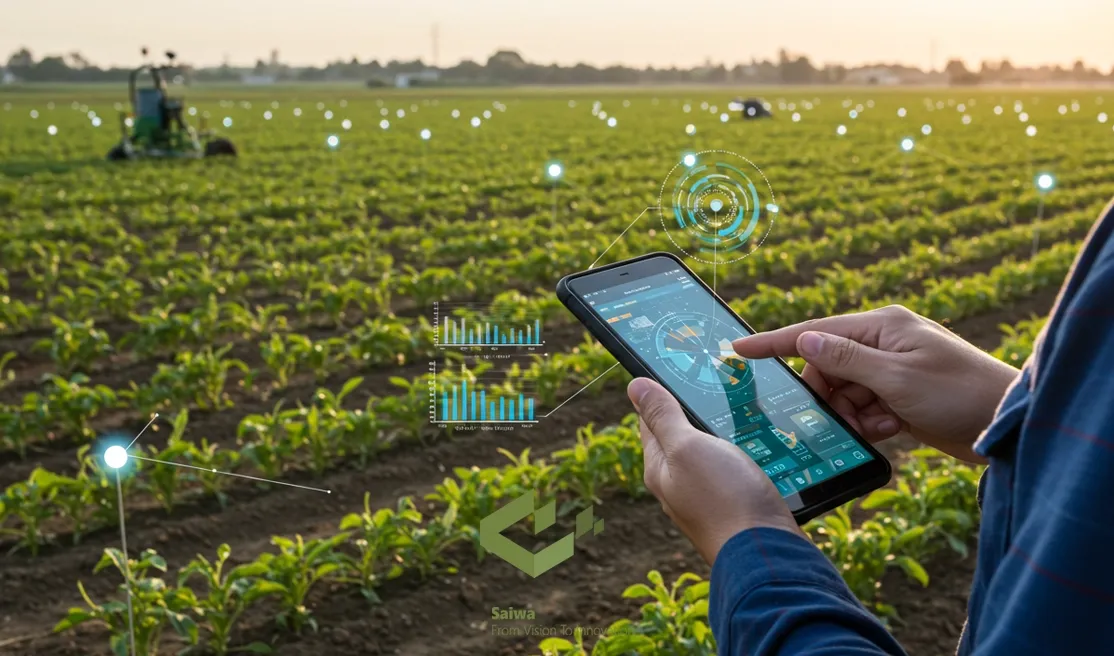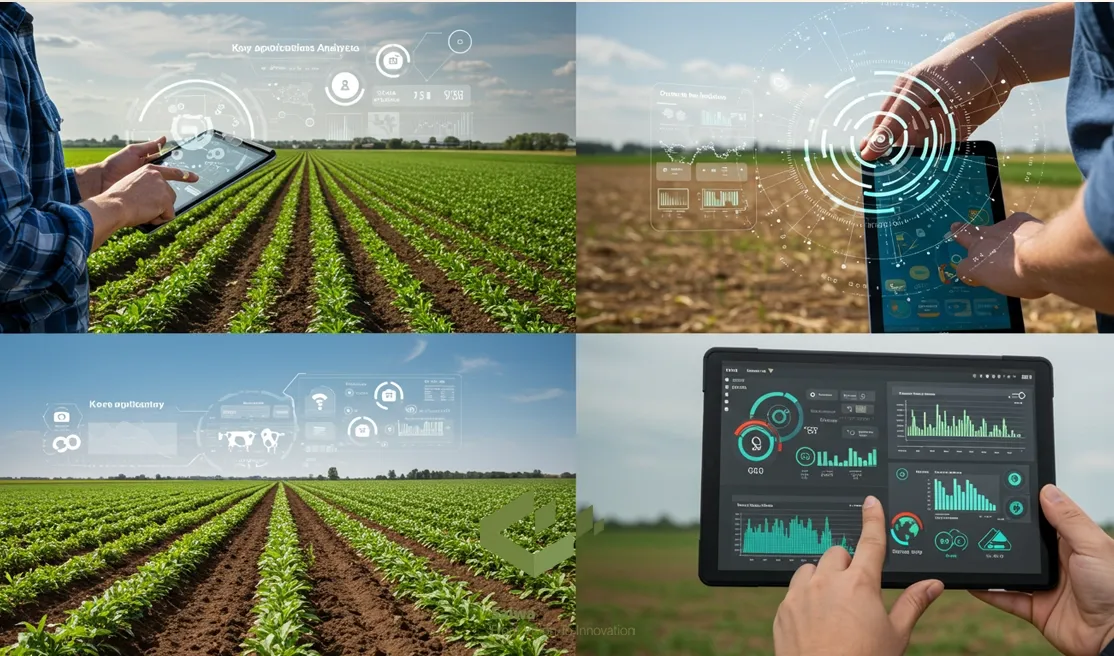Farm data analytics - Unlocking the Future of Modern Agriculture

The future of agricultural productivity lies in management at a microscopic level. The health of a single plant, the nutrient level in one square meter of soil, or the presence of a single invasive weed can have cascading effects on overall yield. Harnessing the power of high-resolution data allows for intervention at this granular scale.
Technologies like Saiwa's Sairone are designed for this purpose, transforming millions of image pixels into actionable micro-insights. This article examines how focusing on these minute details through data analytics creates a massive macroscopic impact on efficiency and sustainability.
Foundational Components Driving Farm Data Analytics
The ongoing analytical revolution in agriculture is not abstract; it is built upon a concrete technological foundation. These core components work in concert, each playing a distinct role in this data-centric ecosystem, which we explore below:
Sensors and IoT Devices: These are the primary data collectors on the ground, gathering real-time information on everything from soil nutrients to micro-climatic conditions.
Drones and Satellite Imaging: They provide a critical bird's-eye view, capturing high-resolution multispectral imagery essential for monitoring vast areas efficiently.
GPS and GIS Systems: These technologies provide the spatial context, enabling precise location-based analysis and action, which is the cornerstone of precision farming.
Machine Learning and AI: The intelligence layer that processes the collected data, identifying patterns, predicting outcomes, and enabling automated decision-making.
Read Also : Using AI-Powered Environmental Monitoring to Optimize Crop Yields with Sairone

Preparing the Right Data for Accurate Farm Insights
Selecting and preparing high-quality data is essential to the success of agriculture data analytics for smarter crop yield prediction. Clean, consistent, and relevant datasets ensure that AI models produce accurate results instead of misleading ones. Focusing on key variables such as soil nutrients, moisture, and weather patterns allows farmers to transform raw information into reliable insights that improve decision-making, optimize inputs, and increase overall crop productivity.
Key Applications of Farm Data Analytics
The true power of collecting this data materializes when it is applied to solve tangible agricultural challenges. These applications transform raw numbers into strategic advantages across several key domains. Among the most impactful are the following:
Precision Agriculture: Tailoring resource application, water, fertilizer, pesticides to the specific needs of different zones within a single field.
Predictive Analytics: Forecasting crop yields, disease outbreaks, and market trends to mitigate risk and optimize planning.
Supply Chain and Operations: Enhancing the efficiency of operations from planting schedules to harvesting logistics and post-harvest tracking.
Sustainability and Resource Efficiency: Minimizing the environmental footprint by optimizing the use of critical resources and tracking carbon output.
Livestock Management: Monitoring animal health, behavior, and productivity through sensors and data analysis.

Real-World Examples and Use Cases
To ground these concepts in reality, it's useful to examine how they are deployed in the field. Here are three potent examples of how Farm data analytics turns theory into practical value.
IoT Soil Sensors for Moisture Tracking
By embedding IoT sensors across a field, farmers gain a granular, real-time map of soil moisture levels. This allows irrigation systems to deliver water only where and when it is needed, drastically reducing water consumption and preventing crop stress.
AI-Powered Weed Detection Systems
Drones equipped with high-resolution cameras capture images of fields, which are then analyzed by AI algorithms. These systems can differentiate between crops and weeds with remarkable accuracy, enabling targeted herbicide application and reducing chemical usage.
Smart Harvesting and Autonomous Machinery
GPS-guided tractors and harvesters, informed by yield prediction maps, operate autonomously with optimized routes. This minimizes soil compaction, reduces fuel consumption, and ensures harvesting occurs at peak ripeness.
Turning Information into Smarter Decisions
The flood of raw data generated by drones, sensors, and analytics platforms can easily become overwhelming. While collecting information is valuable, without interpretation, it remains just numbers. The real advantage comes from transforming raw data into meaningful trends, visual patterns, and actionable strategies. By analyzing this information, farmers can anticipate challenges, optimize resources, and make smart, timely decisions that improve yields and sustainability directly.
Empowering Modern Agriculture Through Intelligent Insights with Sairone
Moving from raw data to actionable insight requires specialized tools. Sairone, an advanced solution suite from Saiwa, is purpose-built for this challenge. It automates the analysis of drone imagery, empowering farmers, ecologists, and greenhouse operators to make data-driven decisions.
By translating complex visual data into clear metrics for Crop Yield Estimation, pest detection, and overall plant health, Sairone bridges the gap between data collection and practical, on-the-ground action, saving both time and resources.
Conclusion
The integration of data analytics in agriculture is no longer a futuristic vision; it is a present-day imperative for efficiency and sustainability. By harnessing these technologies, we unlock a more resilient and productive food system. Ultimately, Farm data analytics provides the essential framework for navigating the complex challenges of modern agriculture and ensuring global food security.
Note: Some visuals on this blog post were generated using AI tools.
